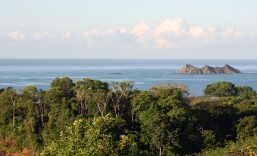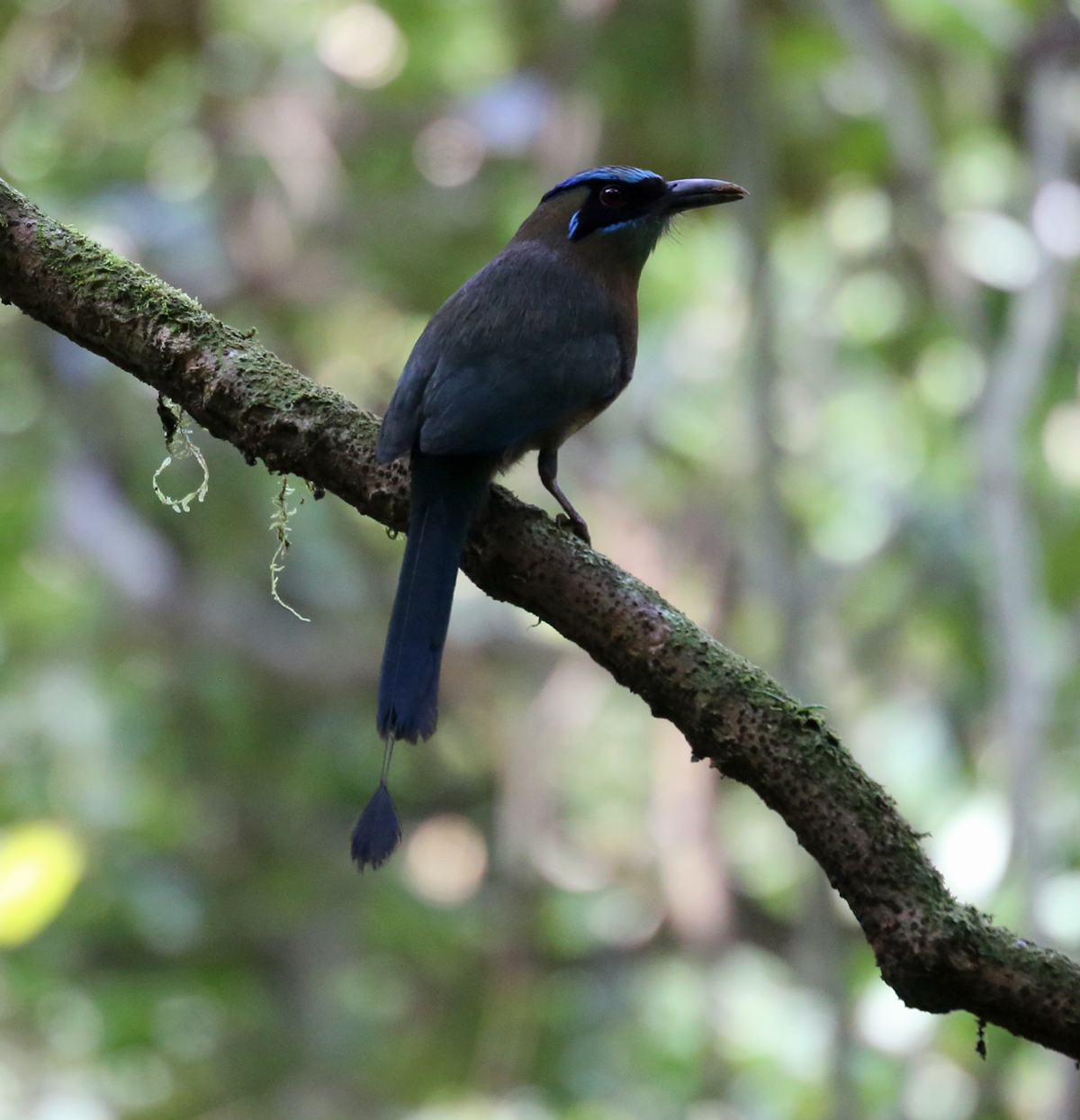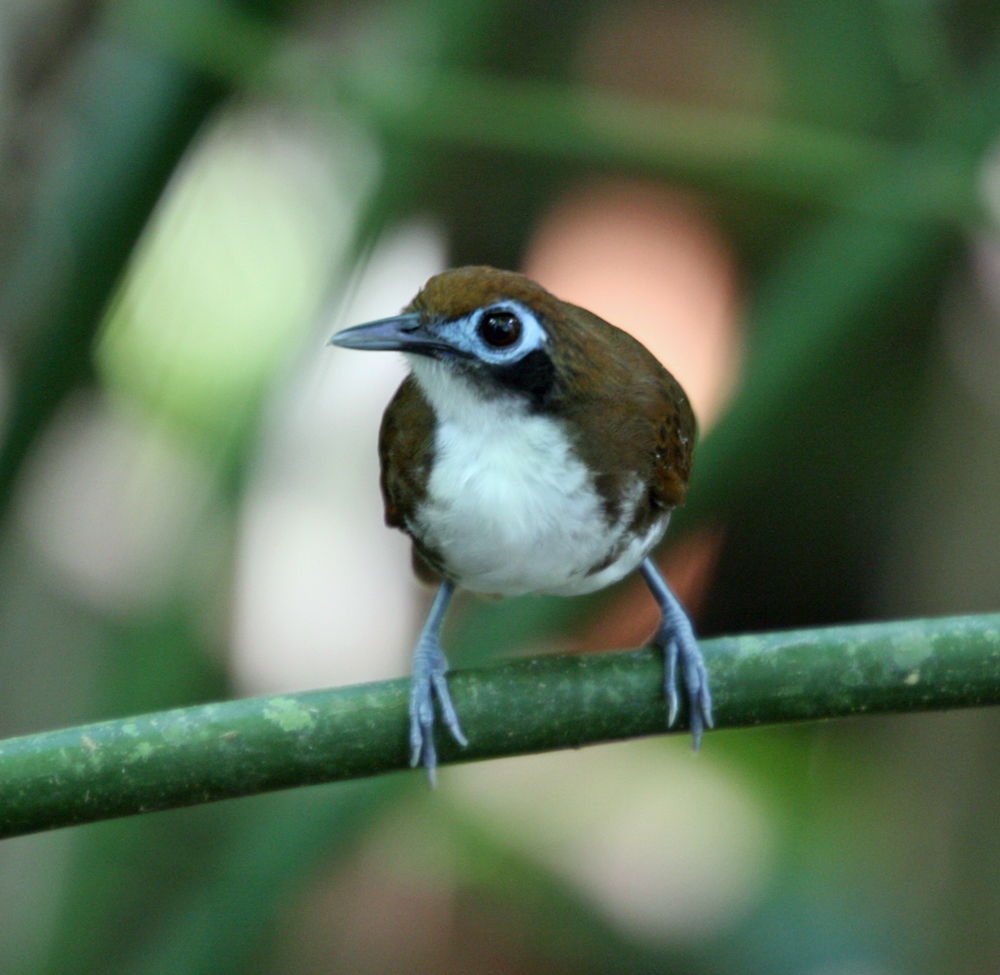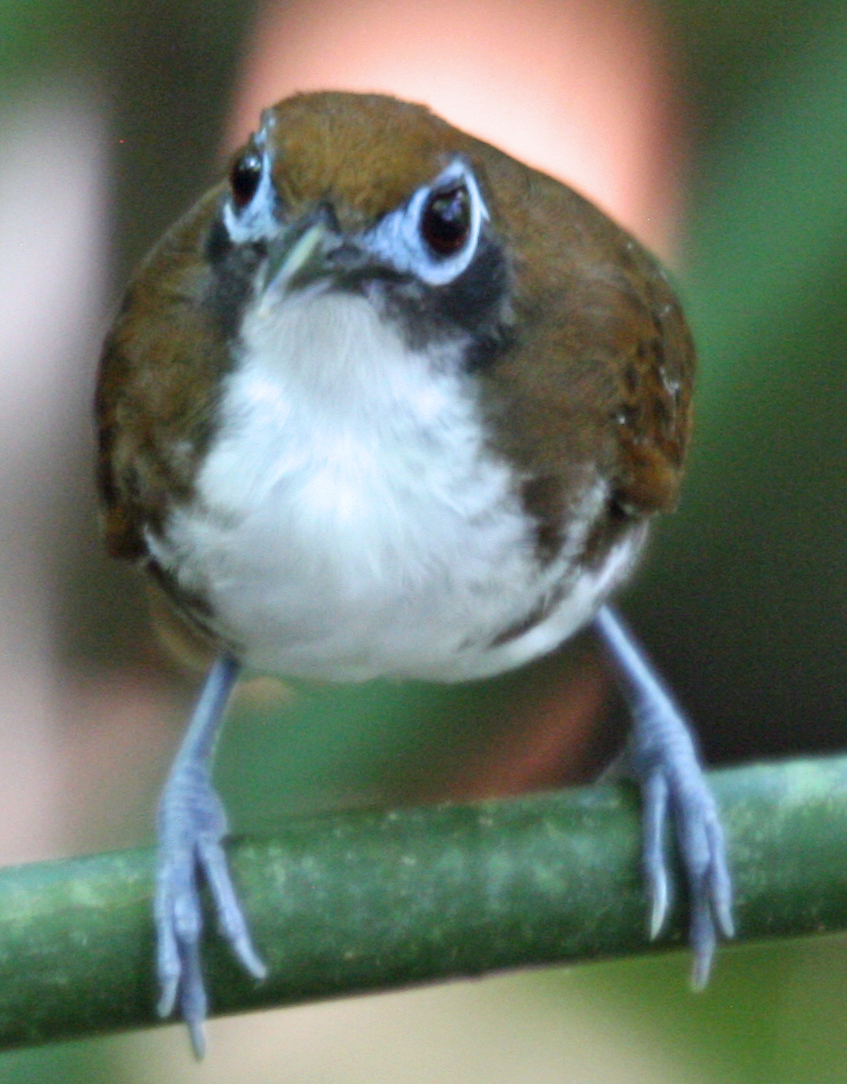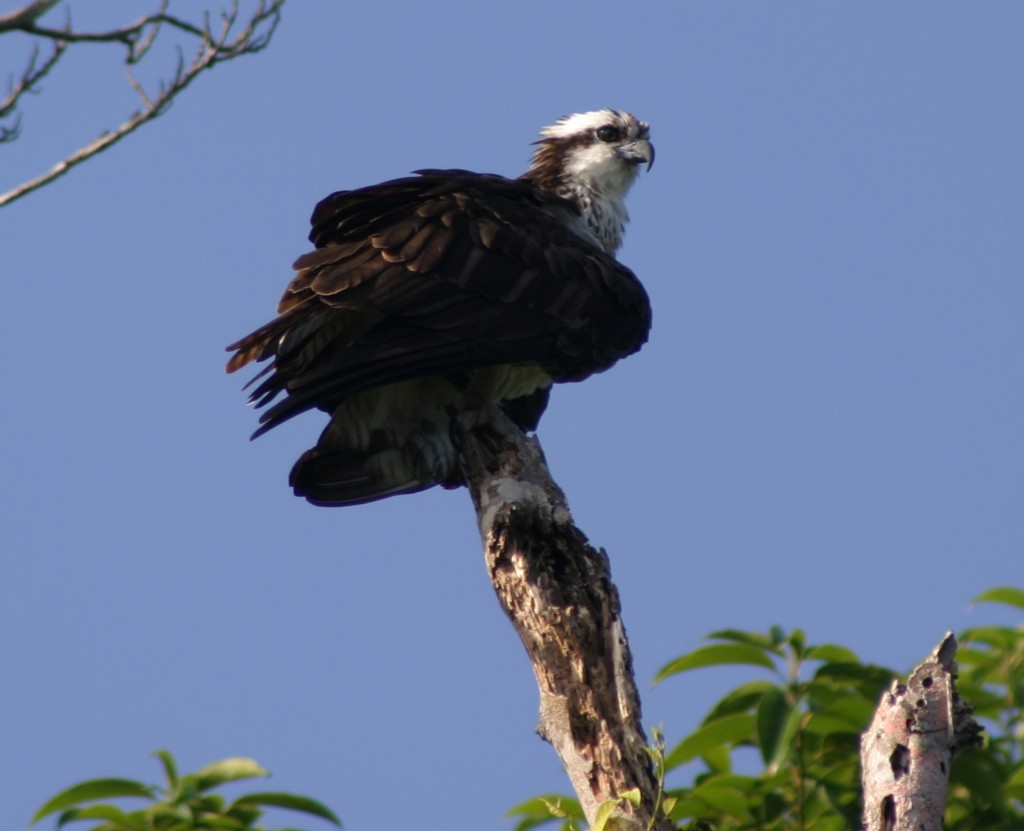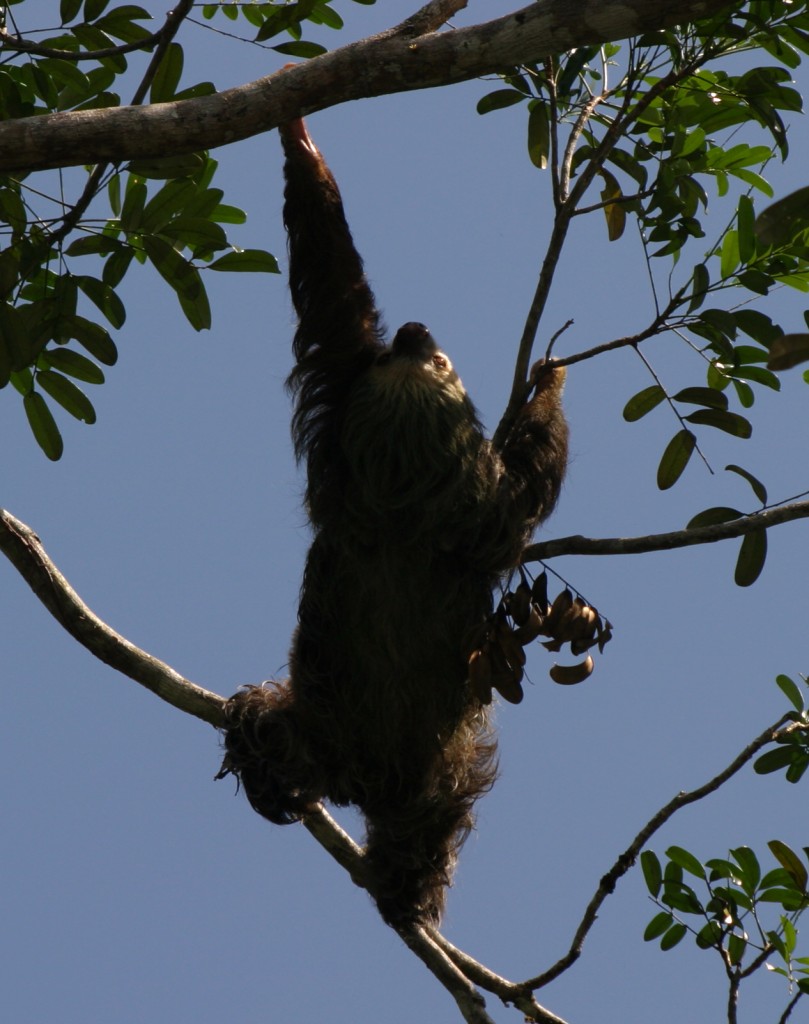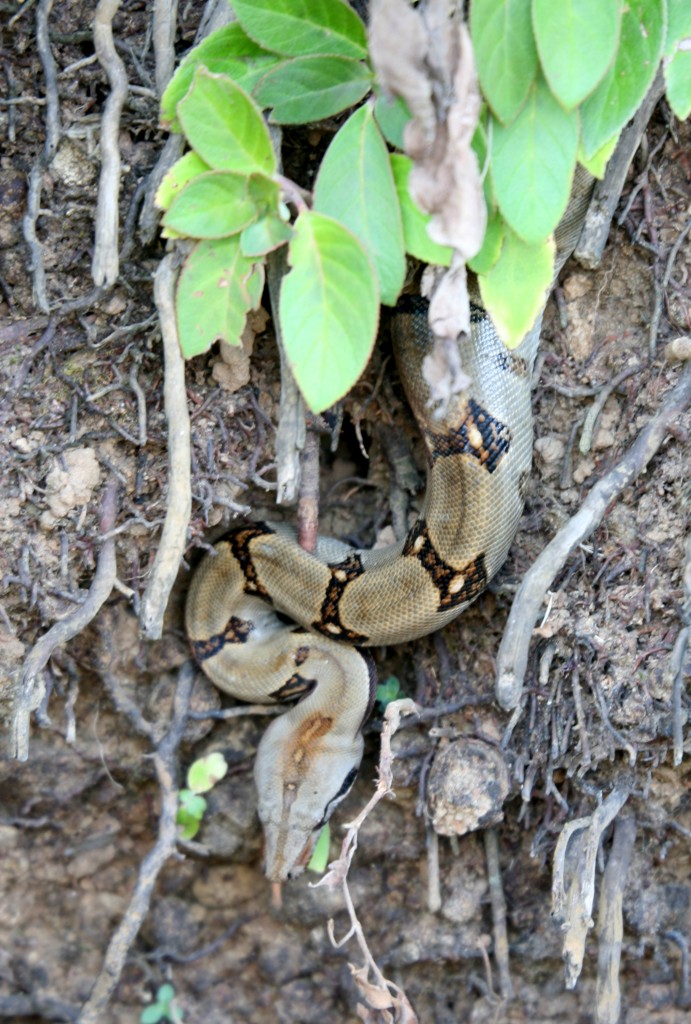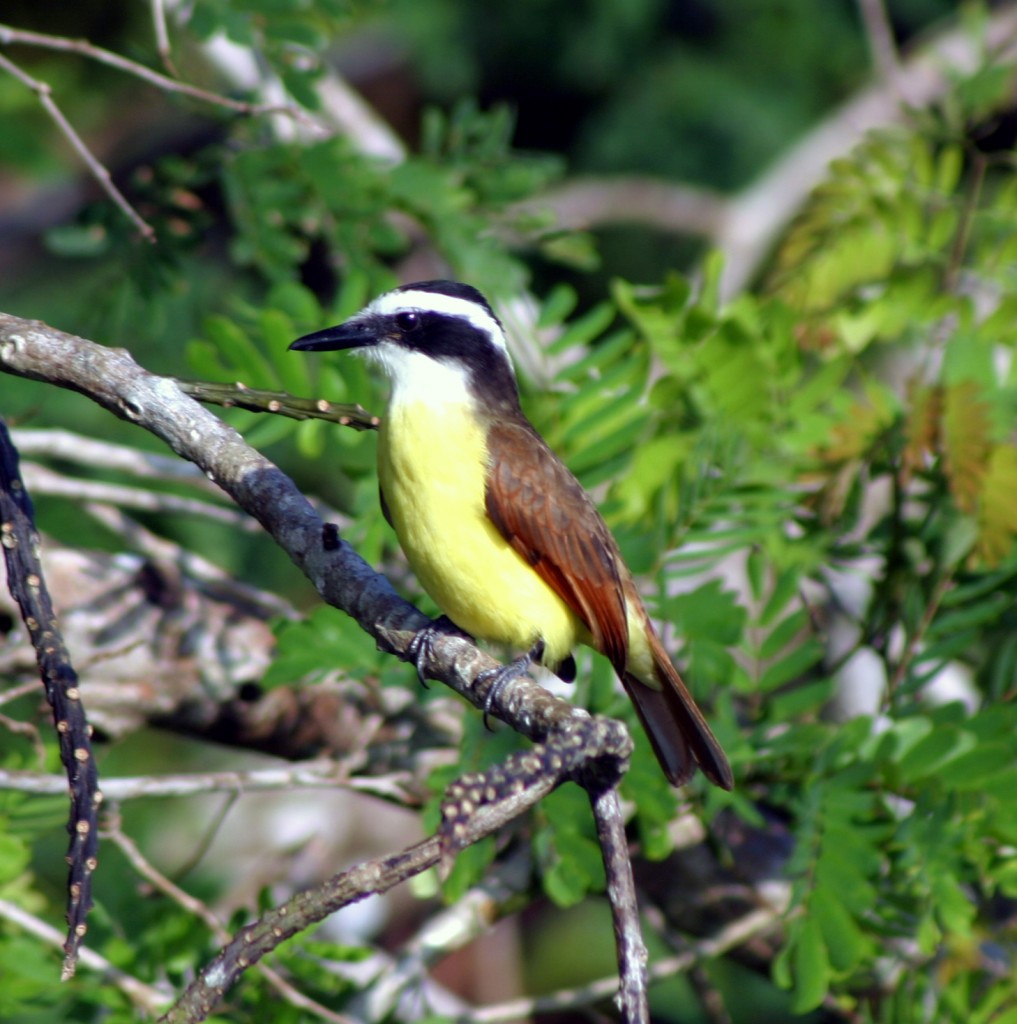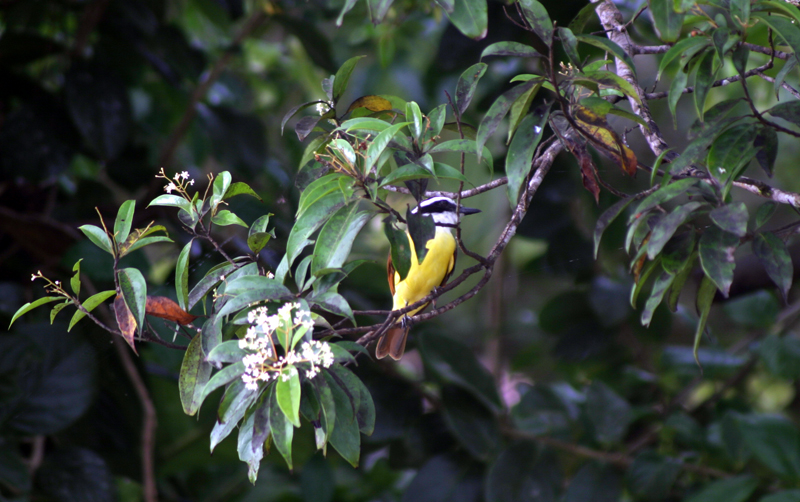The Blue-crowned Motmot (Momotus momota) is the only motmot species in Costa Rica that can be found in the southern Pacific forests. This one was photographed near Carate on the Osa Peninsula. It was swinging its long, racquet-tipped tail feathers back and forth like a pendulum, as motmots often do while scouting for large bugs and small lizards or amphibians to eat.
All media is copyright costaricawildlife.net, 2013.
